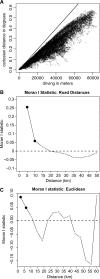Cholera Outbreak in Grande Comore: 1998-1999
- PMID: 26572869
- PMCID: PMC4710449
- DOI: 10.4269/ajtmh.15-0397
Cholera Outbreak in Grande Comore: 1998-1999
Abstract
In 1998, a cholera epidemic in east Africa reached the Comoros Islands, an archipelago in the Mozambique Channel that had not reported a cholera case for more than 20 years. In just a little over 1 year (between January 1998 and March 1999), Grande Comore, the largest island in the Union of the Comoros, reported 7,851 cases of cholera, about 3% of the population. Using case reports and field observations during the medical response, we describe the epidemiology of the 1998-1999 cholera epidemic in Grande Comore. Outbreaks of infectious diseases on islands provide a unique opportunity to study transmission dynamics in a nearly closed population, and they may serve as stepping-stones for human pathogens to cross unpopulated expanses of ocean.
© The American Society of Tropical Medicine and Hygiene.
Figures





References
-
- Mengel MA, Delrieu I, Heyerdahl L, Gessner BD. Cholera outbreaks in Africa. Curr Top Microbiol Immunol. 2014;379:117–144. - PubMed
-
- World Health Organization Global Task Force on Cholera Control Cholera Country Profile: Comoros. 2008. http://www.who.int/cholera/countries/ComorosCountryProfile2008.pdf Available at. Accessed May 19, 2015.
-
- Piarroux R, Bompangue D. Needs for an integrative approach of epidemics: The example of cholera. In: Tibayrenc M, editor. Encyclopedia of Infectious Diseases. Hoboken, NJ: John Wiley and Sons; 2007. pp. 639–654.
-
- Ministère de la Santé Publique et de la Population, Direction de la Population . République fédérale islamique des Comores, Projet FNUAP/BIT/COI/95/PO2/UPP. Geneva: Organisation Internationale du Travail; 1997.
-
- Anselin L. Local indicators of spatial association—LISA. Geogr Anal. 1995;27:93–115.
Publication types
MeSH terms
Grants and funding
LinkOut - more resources
Full Text Sources
Other Literature Sources
Medical

